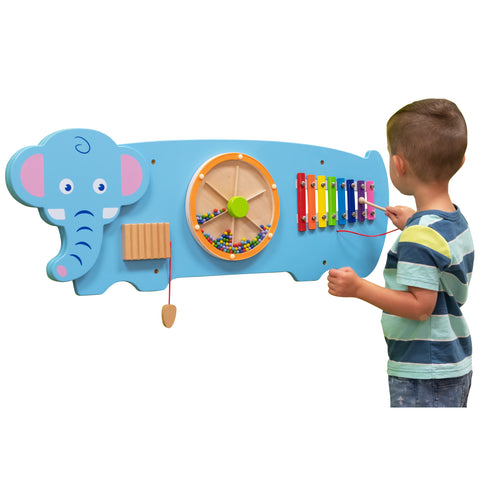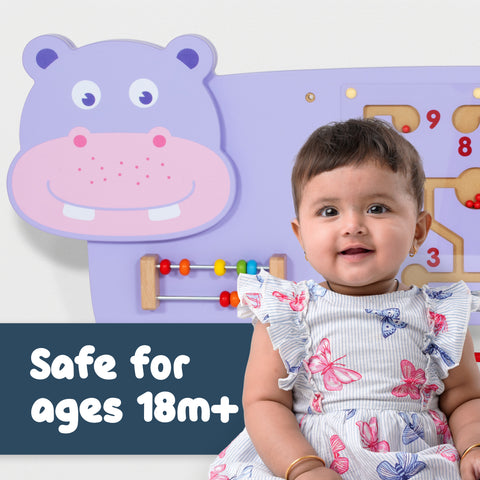
As a parent who’s battled with maintaining my child’s focus during structured activities and daily routines, I know how challenging it can be. Whether it’s distractions from screens or just the normal chaos of a busy household, finding ways to help our little ones stay on track can feel like a never-ending quest. Recently, I discovered that sensory toys were our hidden treasure chest. For my son, the transformation in focus and concentration was nothing short of remarkable. Let’s dive in and explore the perfect tools to help your sensory seeker shine.
Understanding Sensory Toys
What Are Sensory Toys?
Sensory toys are designed to engage a child’s senses—sight, touch, sound and smell—in ways that can help with sensory processing. They’re especially useful for kids who need extra stimulation to stay engaged, those who find it hard to focus on tasks, and those who have sensory processing challenges.
As a parent of an energetic 4-year-old boy, I struggled with his tendency to deviate from daily activities. It was a constant challenge to keep him on task when getting dressed, eating meals and getting ready for bed. We tried plenty of methods, but nothing seemed to work—until we discovered fidget toys. From the moment he started using them, I noticed a significant change. The subtle, quiet movements of his hands with the fidget toys helped channel his excess energy and strengthen his concentration. He was engaged and focused. Fidget toys became an essential part of his daily routine. They provided the sensory input he needed to focus, honing his energy to help him sort his thoughts. For parents facing similar challenges, I highly recommend giving sensory toys a try.
The Science Behind Sensory Toys and Focus
Sensory input plays a crucial role in maintaining focus. Sensory toys provide sensory input that can calm a child’s mind and body, improve attention and reduce anxiety. For children with sensory processing challenges or those who are easily overwhelmed, sensory toys can provide tactile stimulation to help them stay relaxed and centered.
Tactile stimulation can strengthen sensory processing abilities that leverage focus, memory and understanding. You’re probably familiar with well-known sensory toys like fidget spinners and textured balls. The tactile feedback from these sensory toys creates a sense of calm. When children engage with these toys, they can often better manage their sensory needs—making it easier for them to engage in tasks that require concentration.
Top Sensory Toys for Enhancing Focus
-
Interactive Sensory Boards
Interactive sensory boards are filled with different textures, buttons, and activities that engage multiple senses. There are activity wall panels, busy boards, sensory activity boards and more! For example, our Rainbow Activity Wall Panels include 10 different sensory activities to keep toddlers occupied. These engaging boards can be a fun and effective way for children to burn off excess energy and improve their focus and coordination.
-
Fidget Spinners
Remember when fidget spinners exploded in 2017? They’re still such a useful sensory toy. Small, portable and discreet, they’re perfect for use at school or home. Fidget toys give children something to do with their hands, which can help improve their focus during tasks.
-
Sensory Balls
Sensory balls come in various textures, sizes and colors. They can be squeezed, rolled or bounced! The tactile feedback they provide can help reduce stress and improve concentration.
-
Puzzle Toys
Puzzle toys engage little hands and growing noggins. Solving puzzles requires focus and patience, which can translate into improved attention spans for other tasks. Whether it’s a classic jigsaw puzzle or a more complex brain teaser, these toys can offer both entertainment and cognitive benefits.
-
DIY Sensory Bottles
Recycled plastic bottles can be filled with various materials like glitter, beads or colored liquid to create a calming visual effect. Shake the bottle and watch the contents swirl and trickle! It can help children focus and relax.
Tips to Find the Right Sensory Toy for Your Child
-
Consider Your Child’s Specific Needs
When choosing sensory toys, it’s important to consider your child’s specific needs. Some children may benefit more from tactile stimulation, while others may need visual or auditory input. Pay attention to what seems to engage your child and choose toys that align with those needs.
-
Evaluate Effectiveness
After using a sensory toy for the first time, your kiddo might not be interested. And that’s okay! Not all sensory toys work the same for every child. Try a few different types and observe how they impact your child’s focus. You might find that certain toys are more effective than others for your child’s unique needs.
-
Involve Your Child
Involve your child in the selection process to spark their interest and investment in using the sensory toys. If you let them pick out their own toys, they’ll more likely use them regularly.
How to Incorporate Sensory Toys into Daily Routines
Morning Routine
Start the day with a sensory toy to help your child wake up and get ready. Use a textured sensory ball or a fidget spinner while they are getting dressed. This can help them focus and stay calm during the transition from sleep to starting the day.
Mealtime Engagement
Incorporate sensory toys during mealtimes to keep your child engaged and seated. Place a sensory board or puzzle on the table. This can help your child stay seated at the table longer and focus on eating.
Bedtime Wind-Down
Use sensory toys as part of their bedtime routine to help your child relax and wind down. Tactile toys like squishy sensory balls, sensory bottles or even pillows can create a calming environment to ease the transition to sleep.
Sensory Toys FAQs
Are Sensory Toys a Distraction?
Some parents worry that sensory toys might be a distraction rather than a help. However, when used appropriately, these toys can be powerful tools to improve focus and reduce anxiety!
What If My Child Doesn’t Want to Play With Their Sensory Toy?
If your child initially resists using sensory toys, try to understand their concerns and find ways to make the toys more appealing. Let them choose their own sensory toys. Or, try to incorporate them into fun activities to pique their interest and create an inviting sensory environment.
My Child Still Won’t Focus. What Should I Do?
Sensory toys are just one part of a broader strategy to improve focus. Combine them with other focus-enhancing techniques such as structured routines and distraction minimization. It can take time to find just the right amount of stimulation for your little ones.
Takeaways for Your Sensory Seeker
Discovering the impact sensory toys can have on improving focus has been pivotal for our family. It’s clear that these toys can make a significant difference to help kids concentrate and manage their sensory needs.
If you’re looking to enhance your child’s focus and attention, consider giving sensory toys a whirl. Experiment with different types to see what works best for your child and integrate them into your daily routines. From one parent to another, this could be your game-changer. You might be surprised by the positive changes you’ll see!











































